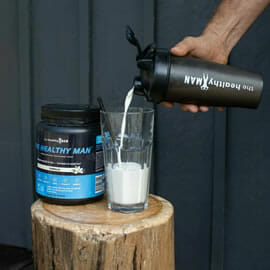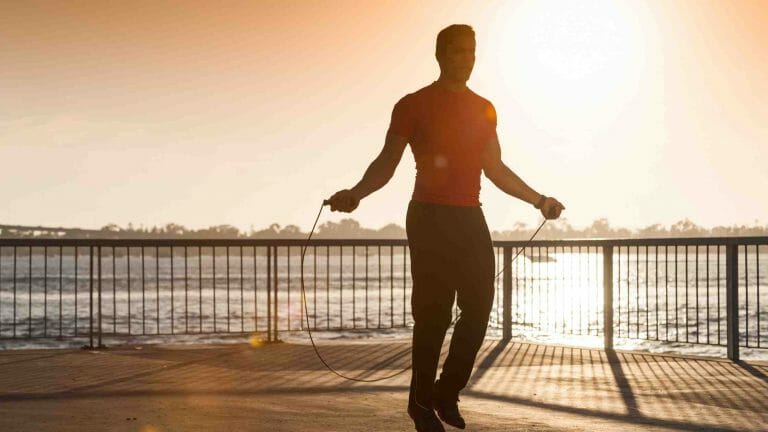12 of Australia’s greatest sporting moments of all time
If there’s one thing Australian’s love it’s when we succeed on the international sporting stage whether it’s at the Olympics, in golf, in tennis or any of the football codes we compete. We have compiled 12 of Australia’s greatest sporting moments of all time, which is your favourite?
Australia’s 12 greatest sporting moments of all time
Adam Scott’s US Masters playoff win
When: 2013
Where: Augusta, USA
If one great sporting triumph was famous for eluding Australia, it was the US Masters Golf Tournament. Before 2013, no Australian had ever won the tournament throughout its 77-year history. Australia’s golfing heroes had competed at one time or another but none of them had managed the task of securing the green jacket, until Adam Scott’s victory in 2013.
Scott birdied the second playoff hole to defeat Angel Cabrera, in what was one of the tournament’s most memorable finishes of all time.
On this day, Scott not only ended his personal wait for a major championship, but he also cemented his place in history as one of Australia’s greatest sportsmen.
“It’s amazing that it was my destiny to be the first Australian to win,” Adam Scott.
Wallabies captain John Eales Secures Bledisloe Glory for Australia
When: 2000
Where: Wellington, New Zealand
In 2000, the Bledisloe Cup had become synonymous with extraordinary games of rugby, and this game was no different. With time all but up, Australia trailed New Zealand by a score of 21-23, the fate of the cup came down to one final penalty kick.
With the Wallabies regular goal-kicker Stirling Mortlock out of the game, up stepped captain John Eales. It was an all or nothing shot, with glory on one side and a potential lifetime of regret and humiliation on the other. Fortunately for both Eales, the Wallabies and Australia, the penalty kick went right between the posts and the referee immediately blew his whistle, giving the Aussies the win and sending the Bledisloe Cup back to Australia.
Ian Thorpe wins five medals at Sydney 2000
When: 2000
Where: Sydney, Australia
At the Sydney Olympics in 2000, Ian Thorpe, a then 17-year-old swimmer, entered his first Olympics with the weight of the nation on his shoulders after amazing performances at the previous Commonwealth Games, World Championships and Pan Pacific Games. Fortunately for Thorpe, his talent and competitiveness meant he wasn’t about to let anybody down.
Over the course of the Games, he went out and won five medals (three gold and two silver) for his country and broke three world records in the process in what is one of the most amazing solo performances in Olympic history.
In one week, the “Thorpedo” won five Olympic medals and the respect of swimmings fans all around the world. After arriving at the games as a teenager full of potential and expectation, he left as a global superstar, with his name forever etched in Olympic glory.
Interesting fact: Thorpe has won a total of five Olympic gold medals, the most won by any Australian in history.
Jessica Watson’s The Youngest Sailor to Circle The Globe Solo, Non-Stop And Unassisted
When: 2009
Where: Sydney, Australia
On 18 October 2009, Australian teenager Jessica Watson attempted to become the youngest person to solo circumnavigate the globe at just 16 years old. Setting off in a 10.23-metre boat from Sydney, Watson headed north-east, crossing the equator in the Pacific Ocean before crossing the Atlantic and Indian Oceans. She didn’t return until 15 May 2010.
An absolutely unbelievable achievement for the youngster, however, it was never officially recognised as some critics believe she didn’t venture far enough north of the equator for it to be considered a global circumnavigation. Nevertheless, 21,600 nautical miles is the benchmark to be considered a global circumnavigation, and she sailed nearly 23,000 on her journey
Watson was named the 2011 Young Australian of the Year, and the following year was awarded a Medal of the Order of Australia for her achievements.
Interesting fact: Watson filmed a documentary about her solo circumnavigation, which was later narrated by Sir Richard Branson and premiered on ONE HD.
Aloisi books Australia’s ticket to the 2006 World Cup
When: 2005
Where: Sydney, Australia
Back in 2005, Australian soccer history was made when John Aloisi scored the deciding penalty in what was a nail-biting game that ended in a tie against Uruguay. After losing the first leg 1-0, the Socceroos had to be on their very best to stand any chance of beating the South American’s.
Mark Bresciano scored after 35 minutes which meant the game was tied on aggregate. The game then went goalless for the remainder of regular and extra time, which led to the dreaded penalty shoot-out arose. After a couple of killer saves by Socceroo goalie Mark Schwarzer and an unfortunate miss by Mark Viduka put Uruguay down by a single goal. The whole of Australia was on the edge of their seat all we needed was one goal and a 30 plus year dream would come to fruition. It was all down to John Aloisi who cooly slotted his penalty into the top right-hand corner.
That goal meant Australia qualified for the FIFA World Cup for the first time since 1974. Goosebumps!
Interesting fact: Alosi was the first Australian ever to play and score in La Liga, the Premier League and Serie A.
Cadel Evans Wins The Tour de France
When: 2011
Where: Paris, France
Cadel Evans became an Australian hero when he became the first-ever Aussie to win the Tour de France, and boy did he do it in style. He rode for 21 days over 3430km against 180 of the top cyclists in the world, reaching the pinnacle of his sport through unbelievable dogged grit and determination.
For some, Evans’ victory in the Tour de France has been called the greatest sporting performance ever by an Australian. A bold statement, but certainly one that is hard to reason against.
Margaret Court’s Tennis Career
When: 1960 – 1977
Where: Australia
While it’s not technically a sporting ‘moment’, the amazing career of Margaret Court has to go down on the list as it’s one of the most remarkable careers in all sports.
For starters, nobody has won more Grand Slams than Court, neither male nor female. She has an astonishing record of 64 Majors when you combine her singles, doubles, and mixed doubles titles together. It’s likely nobody will even come close to beating it. She also achieved a career Grand Slam in singles, doubles, and mixed doubles.
The Australian won more than half of the singles tournaments she played, won 192 singles career titles which is a record, and was the youngest ever Australian Open champion at 17. In recent years Court has gained more notoriety with her staunch religious views including very public comments against legalising same-sex marriage which has ignited a campaign to have the court named after the player renamed in honour of Indigenous Australian tennis legend Evonne Goolagong Crawley.
Pat Cash’s Davis Cup Comeback
When: 1986
Where: Melbourne, Australia
On December 28, 1986, a young Pat Cash completed a memorable comeback when he defeated Mikael Pernfors 2-6, 4-6, 6-3, 6-4, 6-3, coming back from two sets down in three hours, 27 minutes to secure Australia the win in the Davis Cup Final. While Cash has many moments that could have made this list, the utter fashion in which he won the game has to go down as one of his greatest. It turned out to be Australia’s 26th Davis Cup championship, and one of his most cherished memories as he explains:
“I’ve always thought in many ways that it was a greater thrill (than his Wimbledon title) because it was for my country and my mates. Australians always love their team sports and tennis is a very individual sport so that was a big moment.”
Neale Fraser, the Australian captain, described Cash’s performance as the greatest he had seen by any Australian in Davis Cup play.
Shane Warne’s “Ball of the Century”
When: 1993
Where: Manchester, UK
Shane ‘The King of Spin’ Warne was well known for his incredible deliveries, but none more so than his “Ball of the Century” against England’s Mike Gatting on Day Two during the first Test of the 1993 Ashes series. The flight the ball takes and the spin it generates is simply unbelievable. A truly once in a century ball that might not ever be replicated again.
Amazingly, it was Warne’s first delivery against England, in his first-ever Ashes test. Talk about making a good first impression. Since then, Warne came to be acknowledged as one of the best bowlers in history, and certainly the greatest ever leg spinner.
Warne took a total of 708 wickets from 145 test matches which made him the highest wicket-taker for Australia and the second-highest wicket-taker in cricket history.
Cathy Freeman Wins Gold
When: 2000
Where: Sydney
You’d be hard-pressed to find a moment more memorable than when Cathy Freeman won gold at the Sydney Olympic Games in 2000. Roared on by a crowd of 112,000 spectators, the home favourite, Freeman, was the hot favourite to win the highly anticipated women’s 400m final.
At the time, she was the reigning double world champion and had the weight of the nation on her shoulders, but with the support of the crowd, she managed to pull off a sensational win and bring home the gold for Australia.
Freeman was one of the faces of the games. A woman of Aboriginal descent, she represented unity for all Australians and perpetrated the message that the Olympics stands for, equality on and off the field.
As for the race, Freeman was donning a now-famous green, silver and yellow all-in-one suit complete with hood, which certainly looked unusual when compared to the other runners. Either way, she stormed home in the race, winning gold, to the sheer delight of the adoring home fans, and cemented herself as a true Aussie legend.
Freeman showcased belief in unity and equality by carrying both the Australian national flag and the Aboriginal flag during her celebrations after the race.
Australian Ashes Victory in England
When: 1989
Where: England
The 1989 Ashes series went down as one of the most legendary of all time. It’s said to have ignited the subsequent dominance of Australian cricket, not just in the Ashes, but in the cricket world as a whole.
Back then, the Aussie cricket team wasn’t all that great. They were considered average in most departments, with a collection of players that had the potential to be great on their day, but struggled to find consistency.
Going into the series, Australia was in somewhat of a shambles after consistent losses to New Zealand and struggling to beat a less than stellar Indian side, nobody gave Australia much of a chance against England, who were seen as one of, if not the best side in the world at the time.
Captained by Allan Border the Aussie team had players such as Ian Botham, Graeme Gooch, David Gower, Robin Smith, Allan Lamb, all legends in their own right. In fact, Australian TV only televised the second and third sessions of the day as nobody really wanted to watch them get obliterated. However, that’s not quite how it went down.
What followed was one of the most amazing performances by an Australian team in Ashes history, and an incredible victory that saw Australia either win or draw every match. Not one loss. And don’t forget, this was on English soil!
Allan Border’s team reclaimed the Ashes in incredible fashion, handing England one of their worst ever defeats in the process. The one-sidedness of the series was made even worse by Australia only using 12 players for the whole series, compared with England using 29 players.
Peter Norman’s Stand Against Racism
When: 1968
Where: Mexico City, Mexico
This still stands as one of the most powerful moments in Olympic history. Peter Norman, who is the greatest 200m sprinter that Australia has ever seen, was in fact more famous, or more infamous should we say, for his actions on the podium rather than on the track.
During the trophy ceremony, he supported first and second place athletes, Tommie Smith and John Carlos in their protest against racial inequality that was occurring in the USA at the time. The two Americans wore a pair of black gloves, one each, and raised their fist in what was known as the Black Panther salute. Norman himself wore a human right’s badge himself, to stand in solidarity with Smith and Carlos as a protest against the oppression black people were facing in the USA, and across the globe. The result was an iconic photo of the three of them, standing in defiance against inequality and the persecution of ethnic minorities across the world.
In hindsight, this is looked at as an amazing gesture and should have been celebrated at the time right? Well, the Australian Olympic Committee, didn’t think so. Australia was grappling with its own policies around racial inequality with the White Australia policy in place that led to the Stolen Generation and other atrocities against indigenous Australians.
This stance in Mexico led to Norman and his family being outcast from society when he returned to Australia. He lost his spot on the Olympic team, despite qualifying multiple times and being one of Australia’s fastest sprinters at the time. He couldn’t find employment, and the whole country turned on him, demanding that he apologise for standing with the black athletes.
He was exiled, defunded, and completely rejected. Even come the 2000 Sydney Olympics when multiple Australian Olympic legends were asked to walk in the opening ceremony Norman was left out still in exile from the Australian Olympic community.
Sadly, he died completely ostracised from his country, without ever receiving support or credit for what he did that day. Norman suffered immensely for doing what he did, but as well all look back, we cherish his memory and that he had the unbelievable bravery to stand up and do the right thing.
When he passed away in 2006, Smith and Carlos attended his funeral and carried his coffin, the three men had remained close friends despite the distance forever tied together due to this one moment in time.
“I expected to see fear in Norman’s eyes, but instead, I saw love,” John Carlos said of the time he told Norman of his and Smith’s plans to protest.
In 2012, the Australian parliament officially apologised to Norman and his family for the treatment he received on his return from the Olympics, recognizing his athletic achievements, and his bravery. In 2019, over half a century after Norman’s win and 13 years after his death a statue honouring him was unveiled at Melbourne’s Albert Park.
Interesting fact: Peter Norman’s amazing run at the 1968 Olympics still stands as Australia’s fastest ever 200m run.
Another great moment that transcended athletics and sports to send out a powerful message to the millions of people watching all around the world. Empowering future sporting stars to stand up and do the right thing when it matters most, pushing the door open for civil rights movements and shining a light on political injustice, all while giving people the hope and inspiration that they too can achieve great things.
Have you tried the Healthy Man Meal Replacement?

It’s the perfect low-calorie meal replacement for busy blokes wanting to boost weight loss and improve overall health. It’s full of whey and soy protein which means it’ll leave you feeling full and satisfied and keep you going till your next meal.
If you want to shift some kilo’s, look no further than The Healthy Man’s Meal Replacement!
The Healthy Man Meal Replacement will:-
- Enhance fat-burning ability
- Improve gut health
- Reduce beer belly
- Increase stamina
- Increase muscle strength
- Increase energy, vitality and overall health





